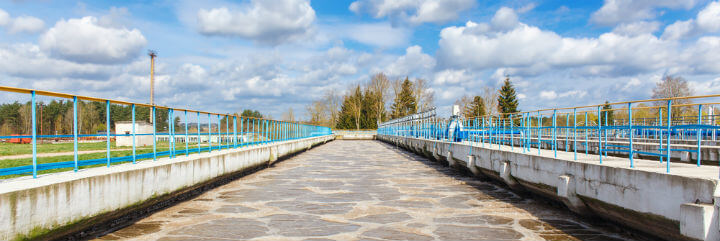Types of Reactors in Wastewater Treatment
Written by AOS Treatment Solutions on June 19, 2018

Through the use of reactors in wastewater treatment, it is possible to enrich the lives of communities and increase the well-being of individuals. AOS Treatment Solutions offers solutions to wastewater problems and provides water analysis services that help to develop treatment programs.
With different types of reactors in wastewater treatment such as the membrane bioreactor and the Moving Bed Biofilm Reactor, AOS can provide your municipal wastewater treatment services.
The Activated Sludge Process
Using aerobic micro-organisms, this wastewater treatment procedure digests organic matter that exists in sewage. Then, the liquid produced through this method is free from other solids and organic matter. The activated sludge treatment process involves an aeration tank with air injected into the liquid, a settling tank that supports the sedimentation of water by separating the sludge from clear water treated in this manner, and a treatment of nitrogenous matter or a phosphate to ensure there is no dissolved oxygen remaining.
The Membrane Bioreactor (MBR) Process
Types of reactors in wastewater treatment, such as with the MBR, may produce higher quality water that urban communities may reclaim for irrigation purposes. This bioreactor may also help a city upgrade an older treatment plant that cannot use outdated equipment.
The MBR may work in conjunction with the activated sludge process to treat waste. The bioreactor reduces the liquid component in the waste mixture that then provides an opportunity to treat the remaining with an activated sludge process. The filtration unit with the MBR is usually either an internal or submerged system or the external sidestream system.
The Biodiscs Sewage Treatment
For sewage disposal needs, the Biodisc provides a way to remove the sewage for homes without main drainage access. It is through the Biodisc that producing higher quality output is achievable with lower maintenance than other treatments. The operating costs for this treatment are much lower, and the process uses less room than a standard septic tank. This method accelerates the treatment of sewage.
Wastewater Treatment Biofilters
Biofiltration is a wastewater treatment process to purify water from sewage. The biofilters contain a medium grain filter through sand or carbon. The biofilter breaks down nitrogen, phosphorus compounds and nutrients in waste. This method of purification also captures other contaminants in the sewage and organic carbon molecules. To increase efficiency, the biofilter will go through water treatment disinfection, so the water is drinkable.
Trickling Filters in Wastewater Treatment

A trickling filter in wastewater treatment consists of a bed of crushed rock. Sewage sprayed over the rock covers the surface and purifies the liquid as it trickles through the filter. Microorganisms attach to the bio matter to remove oxygen materials from the sewage. It is through trickling filters that up to 85 percent of pollutants dissipate from the water. Consulting on these wastewater treatment services for municipalities are available through AOS Treatment Solutions.
Moving Bed Biofilm Reactor (MBBR)
MBBR technology is one of many types of reactors in wastewater treatment. This process uses polyethylene biofilm to mix motion and aerated wastewater treatment basins. The biocarrier is efficient and protects the surface area along with supporting the growth of bacteria necessary to break down waste. These bacteria are responsible for the high-rate biodegradation process in the system. The MBBR is much smaller and expandable than other systems.
For more information on the groundwater treatment and technology available to your municipality, contact AOS Treatment Solutions today!

